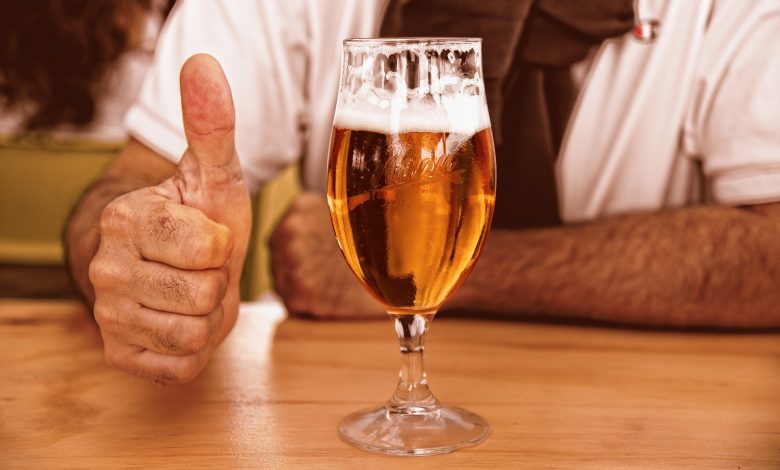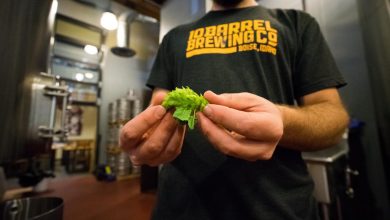The Best Beers to Start Your Homebrewing Journey

Craft brewing and home brewing isn’t an entirely new phenomenon. It is a trend with a head of steam and is reaching more of maturity, but there is a lot for people to uncover, discover, and develop. Many of the microbreweries that have risen to prominence in business started as simple home brewing projects between friends and family.
Many of these developments, from passion project to thriving business, have sparked others to tread the path of diving into the homebrewing world. Whether with future intentions of converting to a full-scale business or merely brewing to save money on store purchases, if the aim is to craft quality homebrews, it needs to be done right.
Often, with any new project or endeavor, getting started is the hardest part. Most likely, there will be some severe screw-ups that will derail the path, and a level of perseverance will be essential.
No two brews are quite the same, and your preferred style of beer could be more difficult for homebrewing than you anticipate. The first of the challenges is in compiling the right equipment and perhaps working with a friend that has brewing experience. Both of these are covered in Jordan Hedberg’s article ‘How to Start Brewing Beer at Home.’ There will also be very real challenges for you in creating something that you want to consume. Putting the hours into home brewing to end up with a product that you don’t like and are not proud to share with your friends can be a defeating experience and may prompt you to pass that brewing kit on to the next excited brewing beginner. Do everything you can to research the beer that is right for you to give yourself the highest likelihood of enjoying the brewing experience.
To help guide your brewing process, we’ve compiled a small list of the easiest and hardest styles of beer to brew at home. Throughout your homebrewing lifestyle, there will be beers you want to challenge yourself with, others you want to experiment with, and some you want to make because it is the style you enjoy drinking. As you get started, it might be helpful to design yourself a track of beers that you will try working with, so you can ascend to a summit worthy of your brewing ambitions.
Before You Start, Just Stop
Some beers are enormous challenges for brewing. So much so that if you are interested in getting involved in homebrewing and only tackling these styles, you either need to be prepared for a long ride or curb your ambitions because you need a reality check. There are experienced home brewers with decades of brewing under their belt that still struggle to get these recipes even remotely correct. If they hit the mark on the majority of flavor notes and still come up short, it will be a reason to celebrate.
Lambics
There is a good reason you don’t see the brewing market flooded with lambic ales. They are one of the more process-intensive beers to brew, and they take a long time. With a brewing time of up to three years, the return for the time put in is not where it needs to be for most breweries.
For beginning brewers, I could see an ambitious effort to start early being warranted by brewing other beers along the way. This could help ease the anticipation over the long run. The problem is that strains of bacteria used for lambics are known to create issues. This means you will most likely want to buy equipment that you will only be using for lambics and nothing else. Otherwise, there will be some serious concerns for cross-contamination with your brews.
Light Lager

This might be a surprise for those just getting involved in brewing, but the mainstream style beers such as Bud, Coors, and Heineken are incredibly challenging to emulate. The perception might be that they are simplistic and lacking much flavor, but their balance and ease of drinking is complicated to replicate.
There is a reason that these are the beers made by the behemoths of the industry. Their factories and breweries have state of the art equipment to ensure exact measurements of ingredients, precise temperatures, and techniques. Without the accuracy afforded by high technology and large budgets, these lagers are nothing easy to copy.
As much as these beers tend to get criticism for being tasteless and boring, they are also smooth and easy to drink. The companies are clearly achieving their goal of getting large sales. Although they may not want to try, an experienced brewer will understand the difficulty of measuring up to these staples of the beer industry.
The Friendliest Brews for Beginners
Those who have never homebrewed before should get started with these beers to grow accustomed with the process. If you move to the more difficult beers too quickly, you increase your likelihood of spoiling each batch and thus wasting time and ingredients.
Forgiveness and flexibility will be a trend running through these beers. For homebrewers’ first few batches, they can expect to make a few mistakes along the way. For that reason, it will be in their best interest to work with beers where they can make a couple of errors and still come out with a product they can drink without gagging.
Porter
A porter is a good starter beer because of how forgiving it can be for beginner mistakes in flavoring. Its strong and robust complexities make it so that slight errors in the intended flavor profiles might not even be detected at all.
Its flexibility with inexperienced brewers is a big help, but don’t expect that it will be fooling people into thinking you are an All-Star brewmaster. Distinguishing notes between porters can sometimes be subtle. This makes the separation between the best of the best and the second-tier porters a bit vague. A first-time brewer would do well by themself to take this as a challenge and work to brew a balanced and flavorful porter with intricate compliments. Doing so would be a sure sign that you are ready to graduate to some of the more sensitive styles where errors in the process can be more costly.
American Pale Ale
As with many sorts of beers that have a high volume of hops involved in their brewing, it can work in the brewer’s favor to mask mistakes. This could account for the reason that you see a lot of the pale ale style of beers being produced by young craft breweries. Not only does the hoppiness work to hide mistakes along the way, but there is also a good chance that these brewers have worked a lot with this style of ale. With frequency comes greater comfort and skill.
The frequency with which you see the American Pale Ale style should be taken as a symbol that there is plenty of variety to be had within this select brew. There is a lot of room to experiment, making this beer something that can occupy your brewing projects for quite a while.
American Wheat Ale

When thinking about an American Wheat Ale, it is most likely an American interpretation of the traditional German Hefeweizen – a widely popular beer because of its smooth, medium body. It is an ideal middle ground for those who don’t like the dense porter flavors or the lagers on the opposite end of the spectrum.
This beer is heavy in grains, which tends to give the body more fluff. The primary difference from the German-style of this beer is a higher content of hops. The hoppy flavor will help to cover up any of your shortcomings in the process of this brew. The American Wheat Ale may not be as forgivable as the other beers on this list, but it is an excellent place for a new brewer to start working.
The fact that this beer doesn’t go as far to cover up errors could make it a better beverage for brewers to receive criticism on the backend. The feedback that can be gathered when the mistakes can be tasted can provide a better learning experience for those looking to master the craft thoroughly.
Mapping Out The Path
Regardless of where a new brewery plans to make their entrance into the brewing world, it would be best to map out their plan of progression. Especially if they are interested in having a go at more difficult beers in the future, making progressions from the more forgiving beers along the way would be the best way to go. As long as there is an enjoyable process of brewing that leads to the desired destination, the road to making that beer you’ll be proud of will be easier to bear with the quality beers you’ll be making along the way.
The ultimate ambition may be accomplishing what few have been able to by creating sublimely blended lambics, or smooth light lagers that step with the kings of beer, but trying to tick that notch on your list in your first brew is not a battle to pick. There is a path to that summit, and it is best enjoyed with breaks built in to share some well-brewed beers along the way.



